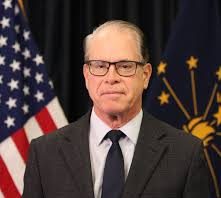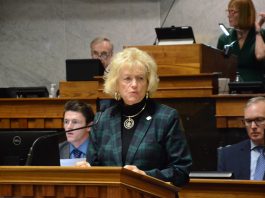Threatened Litigation Distracts Focus And Resources From Bay Restoration
Yesterday, the U.S. Environmental Protection Agency (EPA) Region 3 sent a letter to Members of Congress emphasizing the agency’s commitment to protecting the Chesapeake Bay (Bay). The Bay is a unique and important national resource, and EPA is fully committed to the restoration of the Bay.
EPA’s actions to protect and restore the Bay match the promise EPA Administrator Andrew Wheeler made at his confirmation hearing where he said that “I am very much committed to the Chesapeake Bay and to the Chesapeake Bay Program.â€
The mischaracterization of the EPA Chesapeake Bay Program Director’s recent remarks is unfortunate and distracts from the good work that is being done by agency employees. The question of whether the Total Maximum Daily Load (TMDL) itself is enforceable by a court was answered by the previous administration in court filings defending the Bay TMDL. In 2016, the Obama Administration told the U.S. Supreme Court that a TMDL is an informational tool that “does not impose any binding implementation requirements on the States,†and that “the Bay TMDL does not directly regulate any sources or require any permits.†The Trump administration agrees with these statements from the prior administration.
“Nothing more clearly signifies the EPA’s ongoing commitment and accountability to the restoration of the Bay than our most recent Phase III Watershed Implementation Plan (WIP) evaluations,â€Â said Regional Administrator Cosmo Servidio.
In the evaluations, EPA identified that five of the Bay jurisdictions, including Maryland, must do more to achieve their goals. Our evaluations also identified targeted and extensive EPA support to assist the jurisdictions in their efforts to implement the WIPs.
The full letter is here.
EPA and the Bay jurisdictions, together, have the legal authority to ensure the implementation of Bay TMDLs. As has been done since the Bay TMDL was issued, EPA will continue to use our existing authorities under the Clean Water Act to ensure that all six Bay states and the District of Columbia are accountable for implementing their share of the Bay TMDLs’ nitrogen, phosphorus and sediment reductions.
EPA’s authorities come from the Clean Water Act. These authorities have not changed. Threatened litigation against EPA will undoubtedly distract from efforts to restore the Bay. The partnerships’ resources are better spent on continued enhancement and implementation of plans that will improve water quality. EPA, with the partnership, is committed to having all practices and controls in place by 2025.


